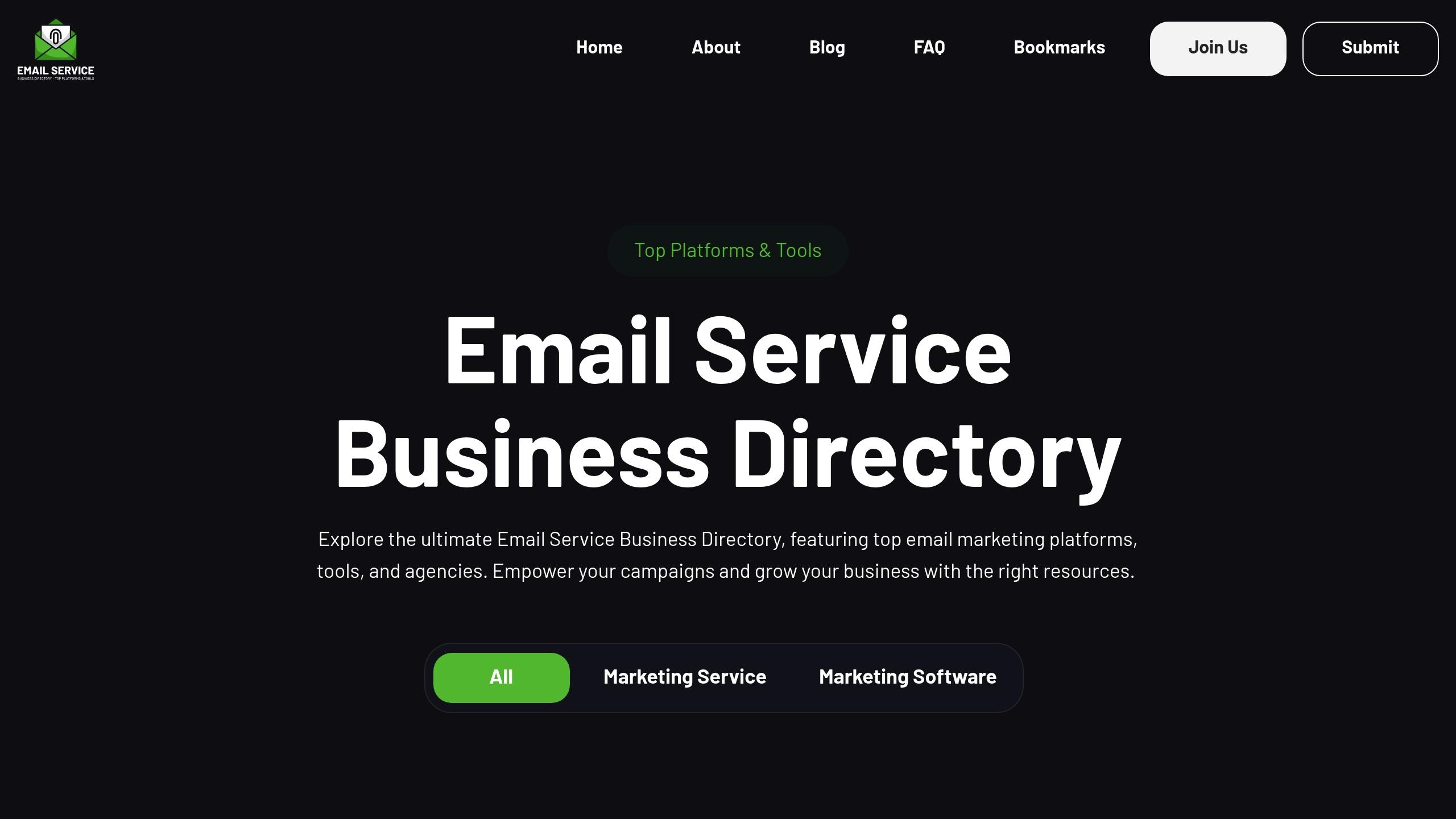Scaling your email marketing efforts increases costs, influenced by your subscriber list size, email send volume, and advanced features. Here's what you need to know upfront:
- List Size Pricing: Costs grow as your subscriber count increases. For example:
- 0–5,000 contacts: $0–$99/month
- 50,001–100,000 contacts: $270–$999/month
- 100,000+ contacts: $1,000+/month
- Send Volume: Sending 100,000 emails at $0.005 per email = $500.
- Premium Features: Tools like automation and segmentation can raise costs but improve ROI.
Cost-Saving Tips:
- Clean your email list to remove inactive or invalid contacts.
- Use segmentation to target specific groups and reduce wasted sends.
- Choose platforms with scalable pricing models (e.g., pay-as-you-go or hybrid).
Key takeaway: Plan ahead by choosing an email service provider that aligns with your growth and budget needs. Track ROI with metrics like CPM ($15–$50 per 1,000 emails) to ensure your campaigns remain cost-effective.
How Much Does Email Marketing Cost?
Basic Email Marketing Cost Factors
To understand how email marketing costs scale, you need to consider three main factors that influence your expenses.
List Size Pricing
The size of your email list is one of the biggest cost drivers. Most email service providers base their pricing on the number of contacts you manage. For small businesses with up to 5,000 contacts, monthly costs usually range from $0 to $99. However, if your list grows beyond 50,000 subscribers, you could be looking at costs starting at $270 per month or more. Here's a breakdown of common pricing tiers:
| Subscriber Range | Monthly Cost Range | Typical Features |
|---|---|---|
| 0–5,000 | $0–$99 | Basic email tools and templates |
| 5,001–50,000 | $100–$269 | Advanced segmentation and basic automation |
| 50,001–100,000 | $270–$999 | Full automation and API access |
| 100,000+ | $1,000+ | Custom solutions and dedicated support |
Besides the size of your list, how often you send emails also plays a role in determining costs.
Send Volume and Timing
If your provider charges per email, your total costs can add up quickly. For instance, at a rate of $0.005 per email, sending 100,000 emails would cost you $500. To control expenses, consider scheduling your emails in batches or sending them during off-peak times.
Premium Features Cost
Investing in advanced features like automation, segmentation, and custom design can increase your costs but can also improve engagement and returns. To find a platform that fits your budget and needs, use tools like the Email Service Business Directory to compare plans and features.
Cost Control Methods
Managing expenses as your subscriber list grows is crucial. Here are some practical ways to keep costs in check.
List Cleanup Tips
Keeping your email list tidy is key to saving money and improving performance. For example, Ego worked with Kickbox for email verification, which boosted open rates by 15% and lowered bounce rates to under 1%. To keep your list in shape:
- Remove hard bounces: Delete email addresses that consistently fail to receive messages.
- Monitor engagement: Identify subscribers who haven't interacted in 6–12 months.
- Implement double opt-in: Ensure new subscribers confirm their interest and provide valid email addresses.
- Use verification tools: Regularly check for invalid emails and spam traps to avoid unnecessary costs.
Smart List Segmentation
Breaking your audience into smaller, targeted groups can improve engagement and reduce wasted resources. Here are some effective segmentation strategies:
| Segmentation Type | Cost Savings | Engagement Boost |
|---|---|---|
| Demographics | Cuts down on send volume | Makes content more relevant |
| Purchase History | Prioritizes top customers | Increases conversions |
| Engagement Level | Filters out inactive users | Enhances efficiency |
| Geographic Location | Optimizes send timing | Improves open rates |
Pair segmentation with well-designed email templates to maximize your efforts.
Ready-Made Template Usage
Pre-designed email templates can save both time and money. Look for options that are mobile-friendly, quick to load, and easy to customize.
You can explore the Email Service Business Directory to find providers offering cost-effective, high-quality templates tailored to your needs.
sbb-itb-6e7333f
Future Cost Planning
As your email list grows, keeping an eye on costs and tracking performance becomes crucial for staying profitable. Planning ahead helps you manage expenses and ensures your email marketing efforts contribute to steady growth. Pick an email service provider (ESP) with pricing that fits your needs and track your returns to make sure every dollar works toward your success.
Platform Selection Guide
The ESP you choose can have a big impact on your long-term costs. Look for providers with pricing models that match your growth plans. Here's a breakdown of common pricing models:
| Pricing Model | Best For | Cost Impact |
|---|---|---|
| Per Subscriber | Consistent send volume | Steady, predictable monthly costs |
| Pay-as-you-go | Variable send patterns | Lower upfront costs |
| Hybrid | Mixed usage patterns | Combines fixed and variable costs |
When evaluating platforms, don't just focus on the base price. Look at features like automation, segmentation, and customer support. Once you've chosen a platform, the next step is tracking your returns to stay on top of your spending.
Return Tracking Methods
Tracking your campaign returns is key to understanding if your spending is paying off. As your costs grow with scale, measuring ROI becomes even more important. Here are some effective ways to track returns:
- CPM Monitoring: Keep an eye on cost per thousand impressions (CPM), which typically ranges from $15 to $50, to identify cost-efficient strategies.
- Revenue Attribution: Use tracking codes and integrate your ESP with analytics tools to see how much revenue each touchpoint generates.
- Performance Metrics Dashboard: Create a dashboard to track essential metrics like campaign cost vs. revenue, customer acquisition cost (CAC), lifetime value (LTV), and how engagement affects deliverability. This helps you identify underperforming areas and adjust spending accordingly.
Email Service Business Directory Benefits

As your subscriber list expands, managing email marketing effectively becomes crucial. The Email Service Business Directory simplifies this process by showcasing top providers, helping you find solutions that are both scalable and budget-friendly.
Platform Comparison Tools
The directory includes tools to compare email marketing platforms based on pricing and scalability. Here's how you can evaluate providers:
| Comparison Factor | Cost Impact | Scaling Consideration |
|---|---|---|
| Pricing Models | CPM rates ($15–$50 per 1,000 emails) | Volume discounts available |
| Feature Sets | Monthly costs ($100–$300) | Includes advanced segmentation and automation tools |
These tools allow businesses to match providers to their growth needs without overspending. For instance, if your email list is growing quickly, a provider with volume-based discounts might save you money. On the other hand, businesses with slower growth may benefit from predictable, subscriber-based pricing. The directory also highlights platforms designed to support businesses with aggressive growth plans.
Growth-Ready Provider Search
Once you've analyzed pricing structures, the directory helps you locate providers capable of scaling alongside your business.
"The email marketing industry is moving towards personalized pricing structures, with agencies offering more flexible packages tailored to specific client needs and budgets", states a report from the Email Service Business Directory.
With its advanced filtering system, the directory lets you find providers offering:
- Flexible Infrastructure: Platforms that can handle sudden increases in email volume
- Scalable Pricing: Models that adjust proportionally as your subscriber base grows
- Advanced Tools: Features like segmentation, automation, and analytics to fuel your growth strategy
Summary
Email marketing costs can vary widely depending on the scale of your campaigns. Industry data shows that CPMs (cost per thousand emails) typically range from $15 to $50. Monthly expenses can start as low as $50 for small businesses and increase significantly for larger operations.
Choosing the right email platform for your business growth is crucial. Basic plans often cost between $0 and $99 per month, but prices rise as your subscriber list grows or if you need more advanced features.
Here are the three main factors influencing email marketing costs:
| Cost Factor | Impact Level | Cost Range |
|---|---|---|
| List Size | High | $0–$99 (up to 5K contacts) to $270+ (larger lists) |
| Send Volume | Medium | $15–$50 per 1,000 emails |
| Premium Features | Variable | Costs depend on the features selected |
Businesses that manage their email lists effectively often see reduced costs and higher engagement rates. Features like automation and A/B testing can improve targeting and increase ROI, but they come with additional expenses. It’s important to plan for both current and future costs when considering these tools.
To keep costs manageable, focus on maintaining clean email lists, using smart segmentation, and finding platforms that offer discounts based on volume. Tools like the Email Service Business Directory can help you compare providers and build a cost-efficient, scalable email marketing strategy. This overview sets the stage for the FAQs that follow.
FAQs
How much does it cost to send 100,000 emails?
Sending 100,000 emails usually costs around $500, based on an average rate of $0.005 per email. However, the exact cost can differ depending on the email service provider and the specific features you need. To find the best pricing, check out the Email Service Business Directory and compare options tailored to high-volume email campaigns.


